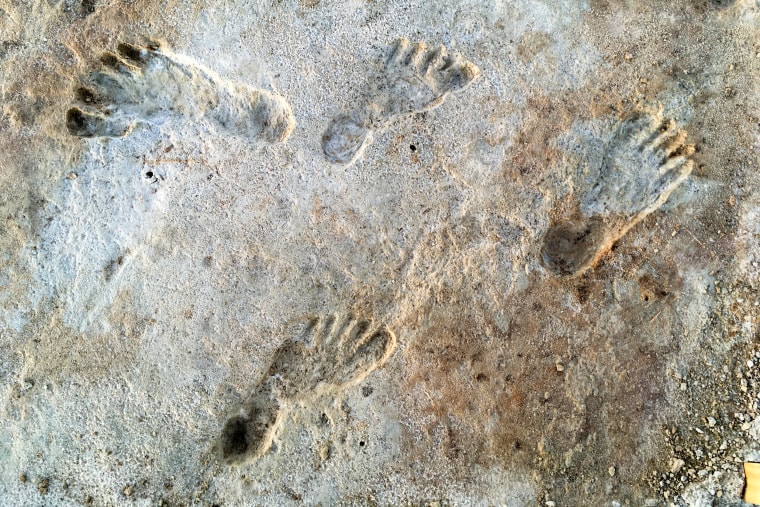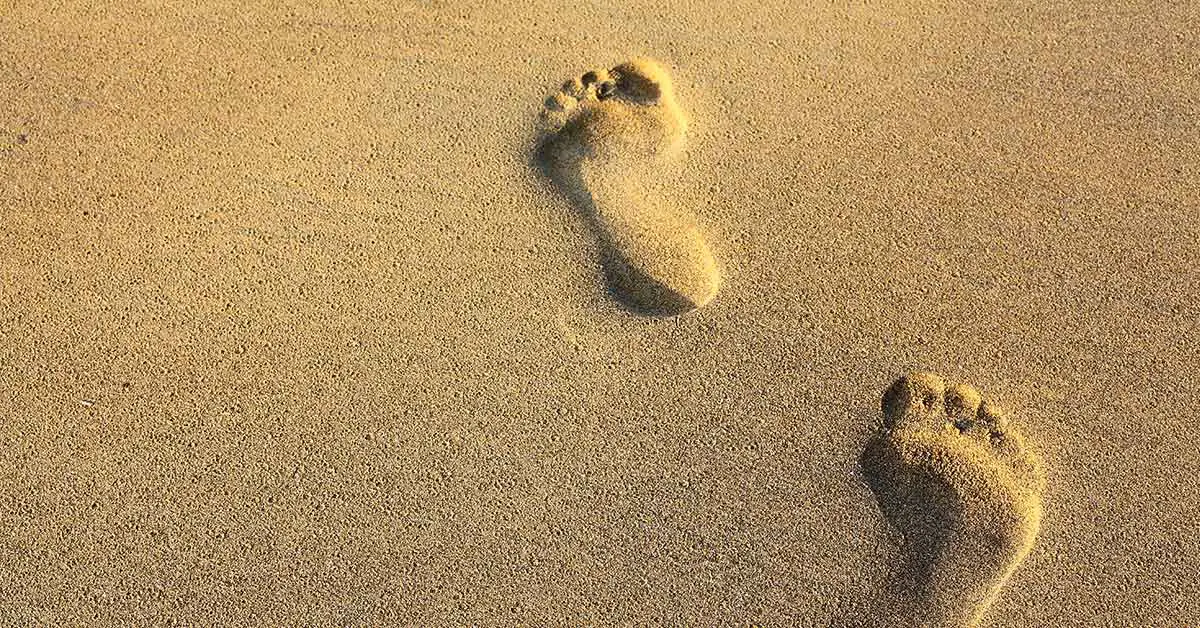How long have humans resided in North America? The exact dates have been debated by archeologists and scientists for years. Recently, however, scientists made a discovery that has answered many of those unanswered questions. How? By dating so-called “ghost tracks” in White Sands National Park in New Mexico.
“Ghost Tracks” Reveal Humans Existed In North America More Than 21,000 Years ago.
Long have scientists debated whether humans came to North America via Siberia or after the last ice age. In the case of the latter, large ice sheets would have rendered this trip impossible. Recently, however, scientists made a discovery that shows humans arrived thousands of years before the ice age. (1)
The discovery was thanks to something called “ghost tracks” in White Sands National Park in New Mexico. David Bustos first heard about these disappearing human footprints in 2005. The prints are only visible during certain times of the year when the ground is wet enough. When the ground dries up, they disappear. In 2016, the scientists finally confirmed that these tracks had been made by real people – now they just had to date them. Recently, they were able to do just that.
“We’d been suspicious of the age for a while, and so now we finally have that it’s really exciting,” Bustos said. “One of the neat things is that you can see mammoth prints in the layers a meter or so above the human footprints, so that just helps to confirm the whole story.” (2)
The research team used radiocarbon dating to determine the footprint’s age. As it turns out, these prints predate previous estimates of how long humans have been inhabiting the continent. They show that people lived in North America 21,000 to 23,000 years ago.

Image Credit: NPS, USGS, and Bournemouth University
Read: A Never-Before-Seen Type of Signal Has Been Detected in The Human Brain
What This Means
Previous to this discovery, many other signs of early humans have been heavily debated. This is because they generally rely on what they think were stone tools. These tools, however, could have been formed naturally and might not have been tools used by humans at all. These footprints, however, are rather definitive.
“A footprint is a really good, unequivocal data point,” said professor of environmental and geographic sciences Matthew Bennet. “That’s the importance of this site — we know they were there.”
These footprints suggest that humans may have arrived in this area up to 30,000 years prior to the height of the last ice age.
Read: Geologist Finds Rare Formation Inside Rock That Looks Exactly Like Cookie Monster on Sesame Street
How The Footprints Are Fossilized
It might seem a bit strange to think that a footprint could be fossilized. After all, when we walk near the shore of the beach, the waves eventually erase any traces that we were there. White Sands National Park is now mostly desert, however, it wasn’t always this way. At the time the footprints were first made, it was a lush wetland. Many animals thrived there, including mammoths, ground sloths, types of cattle, wild camels, and as we know now— so did stone-age humans.
“There are multiple footprint layers spanning a significant amount of time, suggesting a sustained human presence in the area during the Last Glacial Maximum, as opposed to a single event,” said co-author and Cornell University archaeologist Thomas Urban.
Curiously, the archeologists say that footprints made by children and young teenagers outnumber those made by adults. The researchers say this is likely because younger people were more likely involved with tasks that involved simple labor as opposed to more skilled tasks such as hunting. These could include gathering food, water, and materials, as well as playing.
Hard to Date
Other geologists have said that these prints are harder to date than others because they were pressed into layers of mud as opposed to volcanic ash. It is fantastic that we have technology such as radiocarbon dating to figure out their approximate time period.
The most fascinating thing about the prints is the information that they give us. The prints tell a story and share a bit about early human behavior. They give us a peek into the lives of our early human ancestors and their daily routines. It is exciting to think about where this information may lead us next.
Keep Reading: Gorilla Lovingly Embraces Man Who Rescued Her From Hunters

